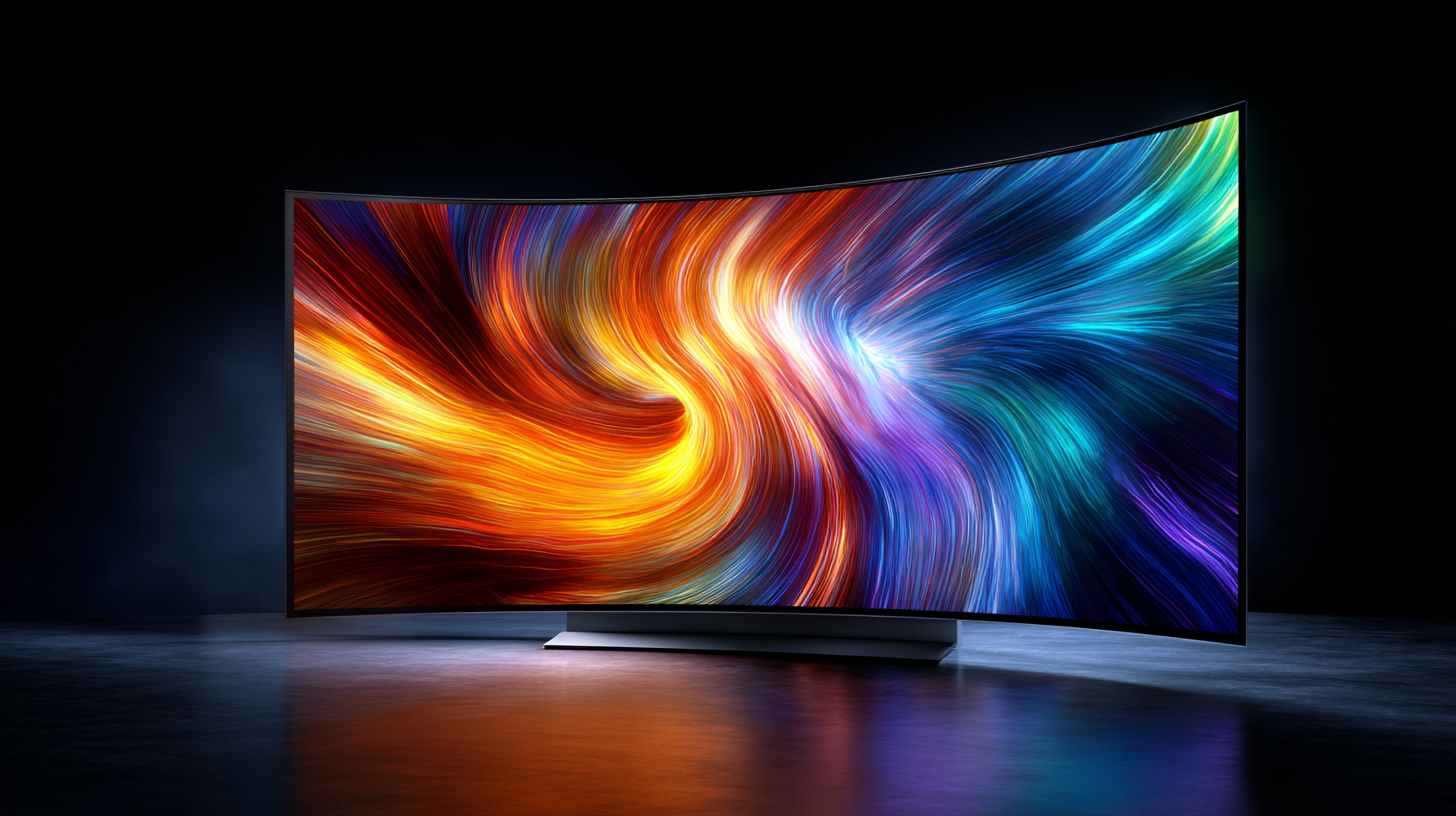
-
Home
-
Products
-
About Us
-
Case
-
News
-
BLOG
-
FAQ
-
Contact Us
Leave Your Message

The increasing popularity of curved screens has revolutionized the visual experience across various settings, from personal entertainment to professional environments. According to recent market reports, the global curved monitor market is projected to reach $7 billion by 2025, growing at a compound annual growth rate (CAGR) of 10.6%. This surge in demand emphasizes the importance of selecting the right curved screen to maximize enjoyment and productivity.

Factors such as display resolution, refresh rates, and ergonomic design play a critical role in enhancing user experience. However, one often-overlooked aspect is the after-sales service and repair costs associated with these advanced displays. Understanding the advantages of warranty options and service packages can significantly affect long-term satisfaction and investment value.
In this blog, we will explore ten essential ways to choose the best curved screen that not only elevates your visual experience but also ensures peace of mind regarding service and maintenance.
Curved screen technology has emerged as a revolutionary advancement in visual displays, offering a more immersive viewing experience. Unlike traditional flat screens, curved displays create a wider field of view, which can enhance depth perception. According to a report by Research and Markets, the global curved display market is expected to grow at a CAGR of 18% from 2020 to 2025, indicating a shifting preference towards these shapes among consumers. This growth can be attributed to the inherent benefits of curved screens, such as reduced eye strain and improved image quality, as they allow for consistent viewing angles across the surface of the screen.
One of the key features of curved screens is their ability to minimize distortion. With a curvature that mirrors the natural curvature of the human eye, these displays can provide a more uniform focus across the entire screen. A study by the International Journal of Human-Computer Interaction found that users reported a 26% decrease in visual fatigue when using curved displays compared to flat ones. Additionally, the enhanced peripheral vision offered by these screens can significantly improve the gaming and cinematic experiences, making them a popular choice among entertainment enthusiasts. With advancements in technology continuing to push the boundaries, the benefits of curved screens are becoming increasingly evident, setting a new standard for visual engagement.

When comparing curved and flat screens, the impact on visual immersion and comfort is considerable. Recent innovations in display technology have demonstrated that curved monitors can significantly enhance the user experience by providing better viewing angles and reducing distortion. Studies indicate that curved displays can decrease eye strain and create a more immersive environment, which is particularly beneficial for gaming and video editing. A notable report suggests that users often prefer the ergonomics of curved screens, as they appear to wrap around the viewer's field of vision, providing a more natural viewing experience.
Furthermore, the market is witnessing exciting advancements, with the introduction of high-resolution curved monitors. For instance, the upcoming launch of a world's first bendable 5K OLED gaming monitor exemplifies how curved technology can elevate not just performance but also comfort. This advancement aligns with research showing that curved monitors can improve spatial awareness and depth perception, providing an enhanced level of interaction with on-screen content. As the technology continues to evolve, consumers are likely to see a growing preference for curved screens, especially in settings that prioritize visual engagement and comfort.

When selecting the optimal screen size for curved displays, it’s essential to consider the viewing distance and the layout of your space. Curved screens are designed to enhance immersion and provide a more encompassing viewing experience. Therefore, a larger screen size is often ideal for achieving that cinematic feel. For rooms where viewers sit closer, such as a home office or a small living room, screens between 27 to 32 inches can create an engaging experience without overwhelming the viewer. On the other hand, if your setup allows for a greater distance, screens ranging from 34 to 49 inches can provide a truly captivating view, making them perfect for gaming or movie watching.
Additionally, the curvature of the screen plays a significant role in functionality and aesthetics. The ideal curvature depends on the screen size and the room's dimensions. A gentle curve (1800R to 3000R) works well for larger screens, offering a wider field of view while maintaining a natural line of sight. For smaller displays, a slightly tighter curve can enhance depth perception and improve focus on the screen. Ultimately, making a careful choice regarding size and curvature will ensure that your curved display not only fits your space but also elevates your visual experience to new heights.
When selecting a curved monitor, one of the most critical factors to consider is the resolution. A monitor with a minimum resolution of 4K is essential for an enhanced visual experience. 4K monitors offer four times the pixel count of Full HD, providing crisper images and more detail. This is particularly advantageous for tasks that require precision, such as graphic design, video editing, and gaming.
Investing in a 4K curved monitor allows users to immerse themselves in stunning visuals, making it a preferred choice in today’s market.
In addition to resolution, other specifications like refresh rate and color accuracy also play significant roles. A monitor equipped with a higher refresh rate, such as 240Hz or even 165Hz, ensures smoother motion, reducing blurring in fast-paced action scenes. Coupled with high dynamic range capabilities and support for wide color gamuts, a curved monitor can deliver a visually rich experience that captivates users. Therefore, when shopping for the best curved monitor, prioritize 4K resolution alongside these essential features to achieve a truly enhanced visual experience.
When selecting a curved screen, one of the critical factors to consider is the refresh rate, especially for gamers and video enthusiasts. A higher refresh rate ensures that images on the screen refresh more frequently, resulting in smoother motion and reduced motion blur. For instance, monitors with refresh rates of 144Hz or higher can greatly enhance the gaming experience, making fast-paced action sequences more fluid and engaging. This is particularly beneficial in competitive gaming, where every millisecond counts and every detail can mean the difference between victory and defeat.
Additionally, when watching videos, a higher refresh rate can enrich the visual experience by providing clearer, more defined imagery during dynamic scenes. Films and shows with rapid transitions or quick movements benefit from smoother playback, offering a more immersive experience. Curved screens, combined with optimal refresh rates, can enhance depth perception and make viewing more comfortable, reducing eye strain during extended use. Thus, it's essential to evaluate refresh rates alongside other features when choosing a curved screen to ensure an elevated visual experience, whether for gaming or movie watching.